Your Guide to the Best Captain Cook Snorkel Tour
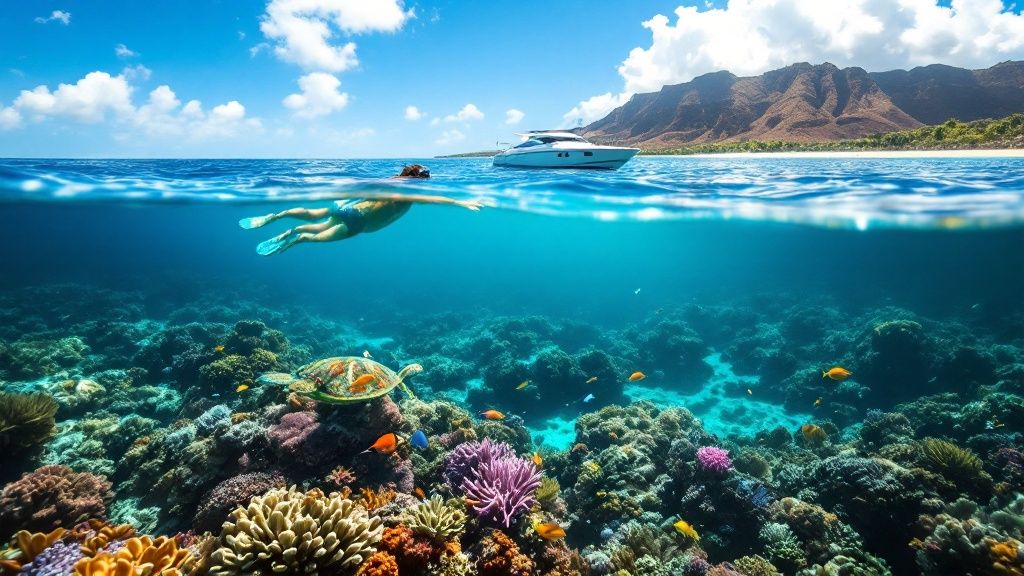
If you ask anyone about the best underwater experience on Hawaii's Big Island, the Captain Cook snorkel tour is bound to come up. This isn't just another snorkeling trip; it's a journey to the pristine, protected waters of Kealakekua Bay—a historic spot famous for its incredible water clarity, vibrant coral, and an almost unbelievable amount of marine life.
Why a Captain Cook Snorkel Tour Is an Essential Experience
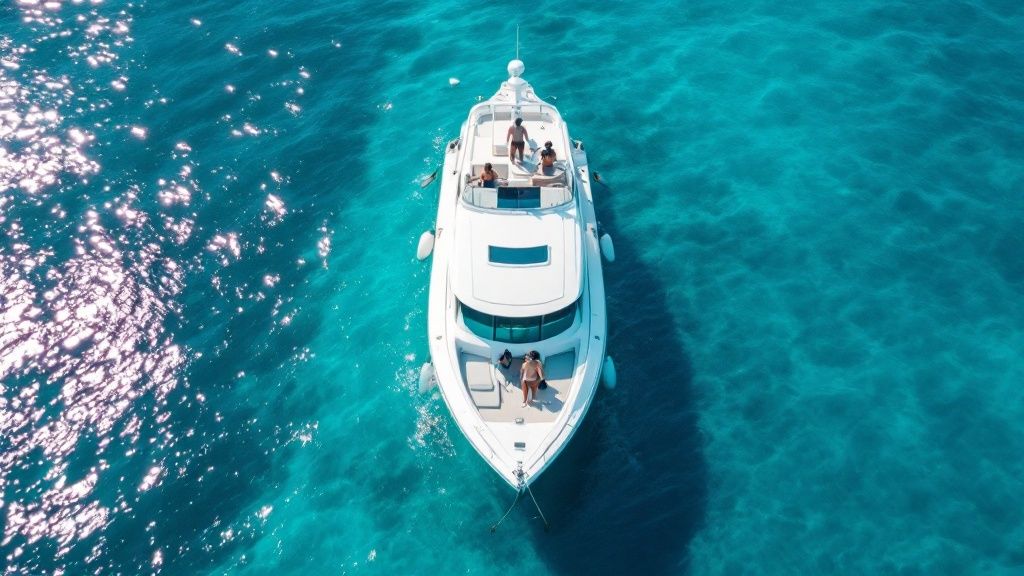
When you close your eyes and picture snorkeling in Hawaii, you’re probably imagining Kealakekua Bay. It’s the real deal. A Captain Cook snorkel tour is a must-do for anyone visiting Kona because it perfectly blends crystal-clear water, a thriving marine ecosystem, and a palpable sense of history.
Unlike many spots you can just walk up to, the bay is a protected Marine Life Conservation District. This means its underwater world has been allowed to flourish, making it exceptionally well-preserved and just teeming with fish.
Even getting there is part of the adventure. Cruising along the stunning Kona coastline, you'll see dramatic lava rock cliffs and lush green hillsides that create a breathtaking backdrop. Then, you arrive, and the iconic white obelisk of the Captain Cook Monument stands tall, marking a site of major historical events from 1779.
It's this unique mix of natural wonder and historical weight that sets the experience apart. It really has something for everyone, whether you're a history buff, a nature lover, or just looking for an unforgettable family outing.
What Makes This Snorkel Spot So Special
The magic of a Captain Cook snorkel tour really boils down to a few key things that come together perfectly. The bay's unique geography naturally shields it from rough ocean swells, which means the water is usually calm—ideal for snorkeling. This protection is also why the delicate coral gardens thrive, providing a home for hundreds of species of tropical fish.
The visibility at Kealakekua Bay often blows people away, frequently exceeding 100 feet. It gives you an unbelievably clear window into the underwater world, all thanks to its protected status and the lack of shoreline development.
This isn't just about spotting a few fish here and there; it’s about dropping into a complete, healthy ecosystem that's buzzing with activity. You'll see:
- Vibrant Coral Gardens: Sprawling fields of coral in all sorts of shapes and colors create the foundation for this underwater city.
- Diverse Marine Life: From the state fish, the humuhumunukunukuāpuaʻa, to huge schools of yellow tang, the reef is always busy.
- Frequent Dolphin Sightings: Playful spinner dolphins love this bay and are often seen putting on an acrobatic show for visitors.
- Historical Significance: There's something powerful about snorkeling right next to the Captain Cook Monument, connecting you to a pivotal moment in Hawaiian history.
To really dig into what makes this adventure a top-tier experience, check out our full guide to the Kealakekua Bay snorkeling tour for more details.
Captain Cook Snorkel Tour at a Glance
For anyone planning a trip, here's a quick rundown of what this incredible Hawaiian adventure is all about.
| Feature | What to Expect |
|---|---|
| Location | Kealakekua Bay, South Kona, Big Island |
| Primary Attraction | Snorkeling at the Captain Cook Monument |
| Water Conditions | Typically calm with excellent visibility (often 100+ feet) |
| Marine Life | Coral reefs, tropical fish, spinner dolphins, sea turtles |
| Historical Context | Site of Captain Cook's landing and death in 1779 |
| Accessibility | Primarily accessible by boat tour or a strenuous hike |
This table gives you a snapshot, but trust me, seeing it for yourself is the only way to truly appreciate what makes this place so special.
Exploring the History of Kealakekua Bay
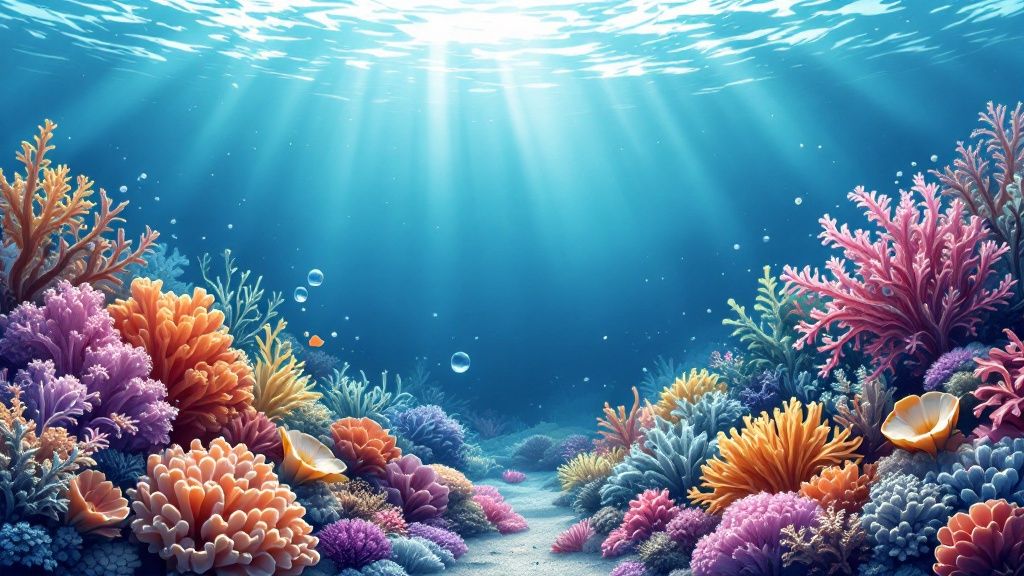
When your boat glides into the calm, turquoise waters of Kealakekua Bay, you’re doing more than just showing up at a world-class snorkeling spot. You’re crossing into a living museum, a place where some of the biggest moments in Hawaiian history went down. The story of this bay is just as incredible as the vibrant marine life thriving right under the surface.
The name Kealakekua actually means "the pathway of the god," which gives you a hint of its deep cultural importance long before Westerners ever arrived. The steep pali (cliffs) ringing the bay cradle ancient burial caves, and the whole area was once a major religious center for Hawaiian aliʻi (royalty). This sacred ground is the stage for the dramatic events that followed.
Knowing this backstory changes a Captain Cook snorkel tour from just a fun day in the water to something much more meaningful. You’re not just swimming; you’re connecting with a place that literally shaped the course of Hawaiian history.
The Arrival of Captain James Cook
The bay's history took a sharp turn in 1779 with the arrival of British explorer Captain James Cook. He sailed in on the HMS Resolution, and he and his crew were the first Westerners to have any real, extended contact with the islanders. At first, they were welcomed like gods, possibly because they were mistaken for the Hawaiian deity Lono.
That first encounter was peaceful enough, but things got tense when Cook returned for a second visit. A string of cultural misunderstandings and conflicts boiled over, leading to a confrontation on the shore that ended with Captain Cook's death on February 14, 1779. That iconic white obelisk you see on the shoreline? It marks that very spot.
An interesting bit of trivia: the monument itself is technically British soil. The land it sits on was deeded to the United Kingdom back in 1877, creating a tiny, sovereign piece of Britain right here on the Big Island.
This historical marker is a constant reminder of the complex, and often turbulent, history that makes Kealakekua Bay so unique. It’s a focal point for every Captain Cook snorkel tour and a must-see piece of the island's past.
Becoming a Protected Marine Sanctuary
Beyond all the human drama, Kealakekua Bay is a straight-up ecological treasure. Its unique geography, with sheer cliffs blocking the wind and strong ocean currents, creates the perfect protected nursery for a fragile marine ecosystem to explode with life. For centuries, these calm, clear waters have supported an insane amount of sea life.
Recognizing just how special this place is, the state of Hawaii designated Kealakekua Bay a Marine Life Conservation District (MLCD). Think of it like a national park, but for the underwater world. This status comes with strict rules designed to preserve the entire natural habitat.
This designation has a few huge benefits:
- Fishing is limited, which lets fish populations get bigger and more diverse than in other spots.
- Boat traffic is regulated, cutting down on stress to the coral reefs and marine animals.
- Taking any natural resources is forbidden, ensuring the ecosystem stays intact for generations to come.
The bay's dual identity as both a historical landmark and a protected marine sanctuary is a huge part of why it's become such an iconic destination. In fact, its combined cultural and natural appeal pulls in over 190,000 visitors every year, making it a cornerstone of the island's ecotourism. This popularity really highlights how successful the conservation efforts have been, allowing snorkelers like us to experience such a pristine underwater world. You can read more about balancing tourism and conservation at Captain Cook Snorkeling Tours.
This careful management means that when you hop in the water, you're entering a place that's not only historically significant but also beautifully preserved. It’s a perfect example of how we can protect our most precious natural and cultural treasures.
What Marine Life You Will See
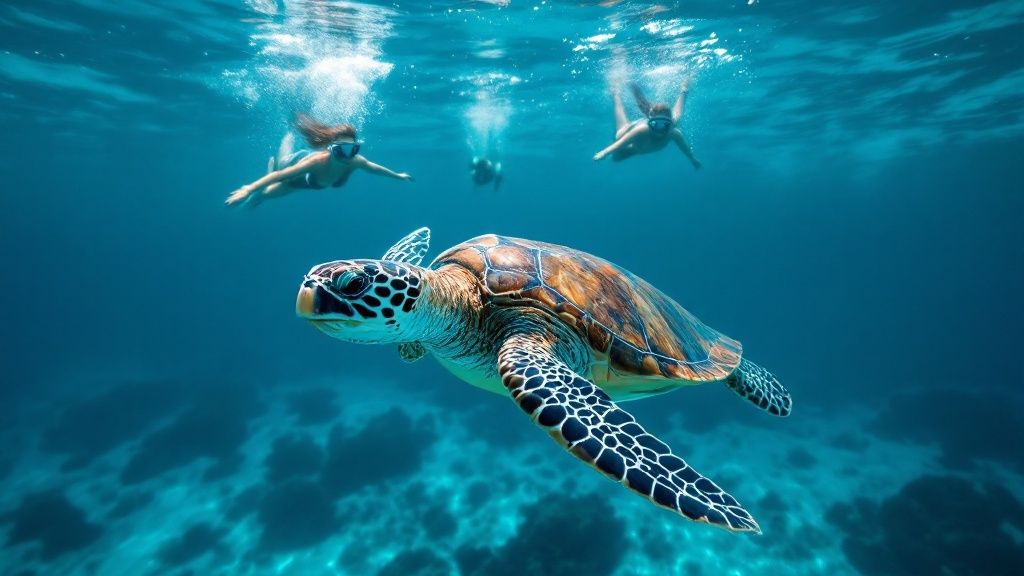
Dipping your face below the surface at Kealakekua Bay is like stepping into another dimension. The water here is famously clear, often with visibility of 100 feet or more, revealing an underwater city buzzing with life. A Captain Cook snorkel tour isn't just a casual swim; it's your front-row seat to one of Hawaii's most pristine and vibrant marine ecosystems.
The first thing that hits you is the sheer number of fish. We're talking about thousands of them, moving together in shimmering schools, creating a living kaleidoscope against the ancient coral reef. It's not about spotting a fish here or there—it's about being completely immersed in their world.
This incredible underwater show is no accident. The bay is a protected Marine Life Conservation District, which basically means it's a sanctuary. The fish here get to live and grow without the usual pressures, and that protection is exactly why the biodiversity is so jaw-dropping.
The Colorful Characters of the Reef
Think of the reef as a busy neighborhood, and you're about to meet some of its most famous residents. Every coral head and rocky ledge is home to a cast of fascinating characters, from tiny gobies hiding in crevices to majestic parrotfish cruising by.
Some of the regulars you’re almost guaranteed to meet include:
- Yellow Tang (lauʻīpala): You can't miss these guys. They're bright, canary-yellow and often travel in massive schools, forming a brilliant, moving cloud of color that’s classic Hawaii.
- Parrotfish (uhu): Get quiet for a second and you might actually hear them—a distinct crunching sound as they use their beak-like mouths to scrape algae off the coral. Their rainbow scales make them one of the most beautiful fish in the bay.
- Butterflyfish (kīkākapu): These are the elegant, graceful swimmers of the reef. They come in all sorts of intricate patterns and usually travel in pairs, adding a little romance to the scenery.
Of course, you can't leave without finding Hawaii’s state fish.
The Humuhumunukunukuāpuaʻa, or Rectangular Triggerfish, is a true local celebrity. Its ridiculously long name and unique markings make it a snorkeler’s trophy. Spotting one feels like the reef is giving you a special welcome.
Learning to identify a few species can turn your snorkel from a pretty swim into a full-on treasure hunt. If you want to get a head start, check out our detailed Hawaiian fish identification guide before your trip.
Beyond the Fish: Spinner Dolphins and Honu
While the fish are always home, Kealakekua Bay also gets some pretty charismatic visitors. The deep, sheltered water is a favorite hangout for some of Hawaii's most beloved marine mammals.
Hawaiian spinner dolphins, or naiʻa, often cruise into the bay in the mornings to rest up after a long night of hunting. Seeing a pod leap and spin out of the water is something you'll never forget, and it's a common sight on the boat ride over. Just remember, federal law says we have to stay at least 50 yards away to let them chill out undisturbed.
Another gentle giant to keep an eye out for is the Hawaiian green sea turtle, or honu. These ancient, serene creatures are often seen gliding gracefully over the reef or just resting on the sandy bottom.
Where to Look for Marine Life
To get the most out of your Captain Cook snorkel tour, it helps to know where to point your mask. The shallow area right in front of the monument is packed with dense coral heads, making it a hotspot for smaller reef fish.
If you swim a little north of the monument, the reef slopes down into deeper water. This is your best bet for spotting bigger animals like turtles and rays. Pay close attention to the areas where the coral meets the sand—a lot of animals hang out there looking for a meal.
By knowing who to look for and where to find them, you'll be able to truly appreciate the incredible web of life that makes Kealakekua Bay a world-class snorkeling destination.
How to Choose the Right Snorkel Tour
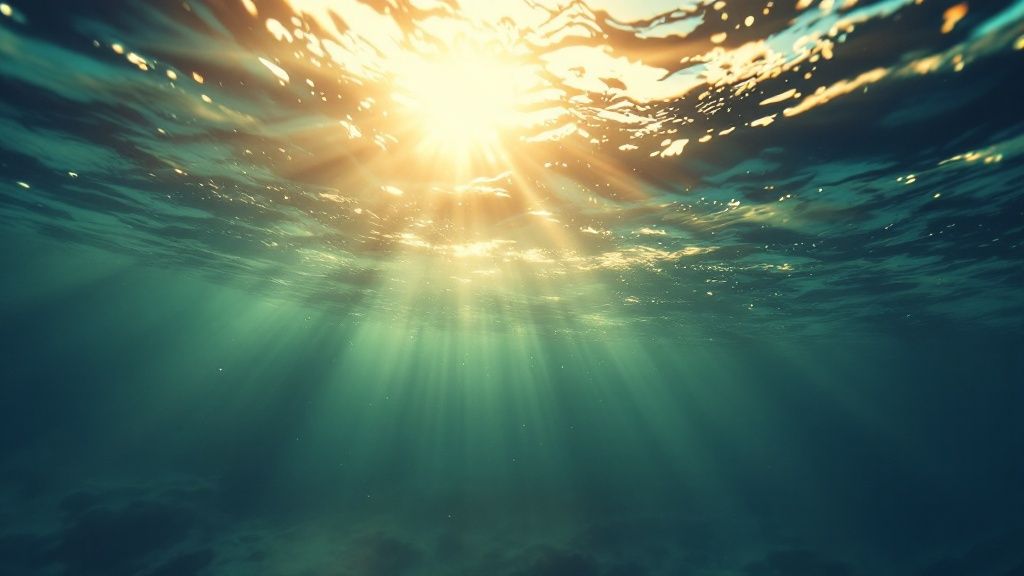
With so many different boats promising an unforgettable day, picking the perfect Captain Cook snorkel tour can feel like a huge decision. But the good news is that all this variety is actually your biggest advantage. It means there's a perfect trip out there for everyone, whether you're a solo adventurer, a couple on a romantic getaway, or a family with young kids in tow.
Think of it like picking a car for a road trip. A zippy little convertible is a blast for a scenic drive for two, but you'd want a spacious minivan for a comfortable family vacation. Every boat and tour style offers a completely different vibe on the water, and knowing the differences is the key to booking the right trip.
Boat Size and Experience Style
Your first big decision is the kind of boat you’ll be on, because it really shapes the entire feel of your day. Generally, you can break the tours down into two main groups: large, comfortable catamarans and smaller, faster vessels like Zodiac-style rafts.
Large catamarans are kind of like the cruise ships of Kealakekua Bay. They’re super stable, have tons of space, and are loaded with amenities that make for a relaxed, comfortable day out on the water.
These bigger boats are often the best bet for:
- Families with young children who need room to run around and an easy way to get in and out of the water.
- Larger groups that want to hang out together and socialize.
- Anyone seeking comfort, with perks like onboard restrooms, plenty of shade, and often a full lunch included.
On the other hand, the smaller boats serve up a more intimate and adventurous experience. These trips have way fewer people, which allows for a much more personalized day.
They’re perfect for:
- Adventurous snorkelers who just want to get to the good spots—fast.
- Couples or small groups looking for a less crowded, more personal feel.
- Explorers at heart, since these nimble boats can often duck into sea caves and lava tubes along the coast that the big boats can't get close to.
Deciding what type of boat to take really just comes down to your own priorities. Are you all about comfort and amenities, or do you prefer a faster, more personal adventure? There’s no wrong answer, just what’s right for your crew.
To make it even easier, let's break down the common boat types you'll see heading to Captain Cook.
Comparison of Snorkel Tour Boat Types
| Boat Type | Best For | Typical Capacity | Key Features |
|---|---|---|---|
| Large Catamaran | Families, large groups, comfort-seekers | 40-100+ | Spacious decks, shade, restrooms, slides, often includes lunch. |
| Sailboat | Couples, small groups, relaxing pace | 6-20 | Quiet and peaceful, relies on wind, intimate atmosphere. |
| Zodiac/Raft | Thrill-seekers, adventurous snorkelers | 12-24 | Fast and exciting ride, can explore sea caves, less comfort. |
| Power Catamaran | Small groups, snorkel-focused | 20-40 | Stable and quick, more amenities than a raft but less than a large cat. |
Ultimately, the boat sets the stage for your whole experience. A big catamaran is a floating party, while a Zodiac is a high-speed adventure.
Morning Calm or Afternoon Activity
Another key thing to consider is timing. Most companies run both morning and afternoon trips for their Captain Cook snorkel tour, and each has its own unique perks. The choice usually boils down to a trade-off between perfect water conditions and potential crowds.
Morning tours, especially the early bird ones, are legendary for having the calmest, glassiest water conditions. The sun isn't as intense, and you'll often be one of the first boats to arrive, giving you a less crowded and more peaceful snorkel. This is usually your best shot at crystal-clear visibility.
Afternoon tours, though, can sometimes have more marine life action as the fish get more active later in the day. And while the winds might pick up a little, you may find fewer tour boats at the monument since many of the morning trips have already headed back. This can lead to a surprisingly serene time in the water.
What Is Included in Your Tour Price
Finally, you’ll want to get clear on exactly what’s included in your tour price to avoid any surprises. Prices can range from around $80 to over $150 per person, but the real value is hiding in the details.
Most solid, reputable tours are going to include:
- High-quality snorkel gear (mask, snorkel, and fins)
- Flotation devices like pool noodles or life vests
- An experienced, lifeguard-certified guide
- Snacks and drinks (water, juice, soda, etc.)
The more premium tours, especially those on the big catamarans, might also throw in a full lunch, prescription masks, or even a waterslide off the back of the boat. Always read the fine print to compare what you’re really getting. A slightly higher price might be totally worth it if it includes a meal and other amenities you want, making for a much better and more hassle-free Captain Cook snorkel tour.
What to Expect on Your Tour Day
So, what’s the day actually like? Knowing the flow of your adventure from start to finish helps you relax and just soak it all in. A Captain Cook snorkel tour is a well-oiled machine, fine-tuned for the perfect blend of fun and safety. Let's walk through the timeline so you know exactly what’s coming before you even step on the boat.
Your day kicks off at the harbor—usually Keauhou Bay or Honokohau Harbor, depending on who you book with. Getting there on time is a must. Most tours ask you to check in 30-45 minutes before departure. This gives you a stress-free window to park, find the restroom, and meet the crew without that last-minute panicked feeling.
Once you're checked in, the crew will give you a warm aloha and welcome you aboard. This is your chance to snag a good spot, slather on that reef-safe sunscreen, and get familiar with the boat that’s your ride for the next few hours.
The Scenic Boat Ride to Kealakekua Bay
The boat ride isn't just a commute; it's a huge part of the experience. As you pull out of the harbor and cruise down the incredible Kona coastline, you're hit with these amazing views of ancient lava flows crashing into the brilliant blue of the Pacific. This trip down the coast usually takes about 20-40 minutes.
On the way, the captain and crew will run through a quick but thorough safety briefing. They'll show you everything from how the life vests work to where the bathrooms are. They'll also share some fascinating stories about the coast's history, the wild geology, and the marine life you might spot. Keep your eyes peeled—it's super common to see pods of playful spinner dolphins showing off during the ride.
Your crew aren't just boat drivers. They’re lifeguard-certified guides and locals who are passionate about this place. Seriously, ask them anything about the area's history or the wildlife. Their stories really make the trip special.
Gearing Up and Getting in the Water
Once you arrive in majestic Kealakekua Bay, with the famous Captain Cook Monument right there on the shore, the crew will anchor in the perfect snorkel spot. Before you even think about jumping in, they’ll give you a hands-on demo of how to use your snorkel gear. They'll help you fit your mask for a tight seal and show you the trick to clearing your snorkel.
After you're all geared up, it’s go-time. Most boats have easy-to-use ladders or swim platforms that make slipping into the water a piece of cake. If you're a little nervous in the water, no worries—they always have flotation devices like pool noodles or snorkel vests ready to go. The crew will be in the water with you, keeping an eye on everyone and pointing out cool fish you might have missed.
You'll get a solid 1 to 1.5 hours of snorkel time in the bay's pristine, clear water. That’s plenty of time to explore the vibrant coral reefs and swim right through massive schools of tropical fish.
Onboard Refreshments and the Return Trip
When you've had your fill of underwater exploring, you'll climb back on the boat, where snacks and drinks are waiting. Most tours put out a nice spread of fresh tropical fruit, chips, cookies, and plenty of juice and water. Some of the bigger catamarans might even serve up a full deli-style lunch.
The ride back is the perfect time to chill out, swap stories about what you saw, and just bask in the Hawaiian sun. The crew will be hanging out, ready to answer any last questions and help you spot any final wildlife. As you pull back into the harbor, you’ll be buzzing with incredible memories from your Captain Cook snorkel tour, feeling totally refreshed and a lot more connected to Hawaii's amazing underwater world.
Snorkeling Tips for a Safe and Respectful Adventure
Keeping Kealakekua Bay the vibrant underwater paradise it is requires a little help from every visitor on a captain cook snorkel tour. Think of yourself less as a tourist and more as a temporary guardian of this incredible marine sanctuary. Following just a few simple guidelines will keep you safe and protect this fragile ecosystem for everyone to enjoy for years to come.
These pointers are all about making your adventure both safe and eco-conscious. When you're a mindful snorkeler, you're helping preserve the very beauty you came all this way to see.
Reef Safe Practices for Every Snorkeler
That coral reef is a living, breathing city, and its residents are incredibly delicate. The number one rule is as simple as it gets: look, but don't touch. Coral is a living animal, and even the slightest brush from a finger or fin can damage its protective layer, leaving it open to disease and death.
It's the same deal with the marine life. Give them plenty of space. Chasing after a sea turtle or crowding a school of fish causes them serious stress and messes with their natural behavior. Just hang back and observe from a respectful distance; you'll get a much more authentic and rewarding peek into their world.
One of the biggest threats to coral reefs all over the globe comes from chemicals in everyday sunscreens. Ingredients like oxybenzone and octinoxate are known to cause coral bleaching. Always, always choose a reef-safe, mineral-based sunscreen that uses zinc oxide or titanium dioxide. It protects your skin and the reef at the same time.
Mastering Your Gear and Surroundings
Feeling comfortable in the water is the secret to a great snorkel trip. If you're new to this, just take a minute in the shallows to get the hang of breathing slowly and deeply through your snorkel. It might feel a little weird at first, but your body gets the hang of it fast.
Nothing ruins a great view like a foggy mask. The classic trick is to put a tiny drop of baby shampoo or a special defogging solution on the inside of the lens, rub it around, and give it a quick rinse before you pop it on. It's a simple move that guarantees a crystal-clear window to the underwater world.
- Stay Aware of the Boat: Always have a sense of where your tour boat is. It's your home base and the safest point of reference out on the water.
- Use the Buddy System: Never snorkel alone. Stick with a partner so you can keep an eye on each other and share all the cool things you find.
- Listen to Your Guides: The crew is there for your safety above all else. Pay close attention during their briefing and follow their lead once you're in the water.
By keeping these simple tips in mind, your captain cook snorkel tour becomes more than just a fun day out—it becomes a positive contribution to preserving Kealakekua Bay. For a deeper dive, check out our complete guide on essential snorkeling safety tips to feel even more prepared for your adventure.
Common Questions About the Captain Cook Snorkel Tour
Got a few lingering questions before you book? You're not alone. Let's run through some of the most common things people ask to help you get all your ducks in a row for the perfect trip.
What's the Best Time of Year to Go?
People always want to know when to visit, and the honest answer is, there's really no bad time for snorkeling on the Big Island. That said, the winter months, from about December through March, often bring the calmest seas to the Kona coast. As a massive bonus, this is also whale season, so you might get a show from migrating humpback whales on your way to the bay!
If you're planning a summer trip, you'll be treated to warmer water and those classic, sun-drenched Hawaiian days. It really comes down to personal preference, but the snorkeling is fantastic year-round.
Is This Tour Okay for Kids or Non-Swimmers?
Absolutely! This is another big one we hear, especially from families. Most tour boats are super family-friendly and come equipped with all the gear to make everyone feel safe and comfortable in the water. They'll have life vests, pool noodles, and other flotation devices on hand.
This means even if you're not a confident swimmer, you can easily float on the surface and stick your face in the water to see all the incredible fish. The crew is always right there to help out, too.
What if the Weather is Bad?
Safety always comes first, no exceptions. The tour companies are constantly watching the weather and ocean conditions. If things look unsafe, they will cancel or reschedule the trip. You'll typically get a choice between a full refund or booking for a different day, so you never have to worry about losing your money to a little bad weather.
Can I Just Drive to the Captain Cook Monument?
This is a key detail: you can't just plug the monument into your GPS and drive there.
The monument itself is totally inaccessible by road. Your only options for getting to this incredible snorkel spot are to join a boat tour, tackle a very challenging hike down the Kaʻawaloa Trail, or paddle a kayak across the bay.
This limited access is exactly what keeps Kealakekua Bay so pristine and special. Taking a boat tour is by far the easiest and most relaxing way to experience it.
Ready to see one of Hawaii's absolute best snorkeling spots for yourself? Kona Snorkel Trips runs expert-guided tours that get you right into the heart of the action with Hawaii's amazing marine life. Book your Captain Cook snorkel tour today!
